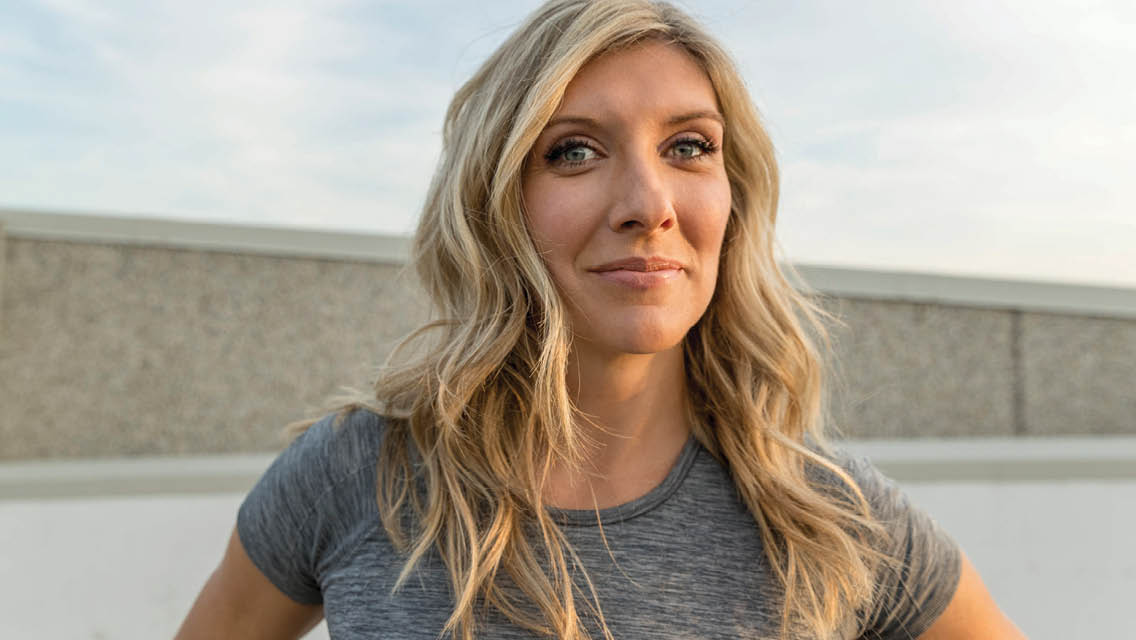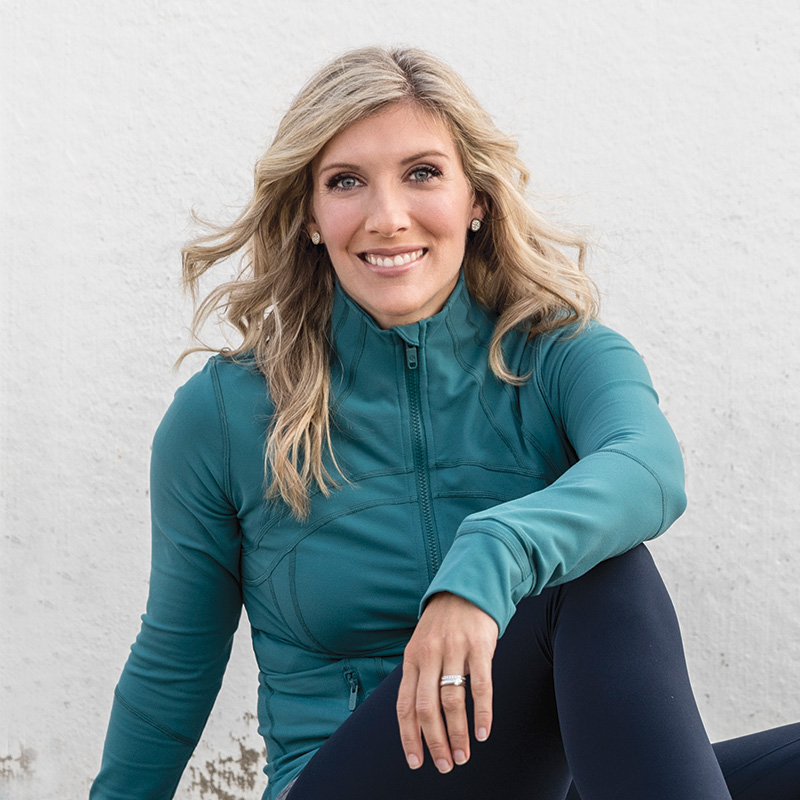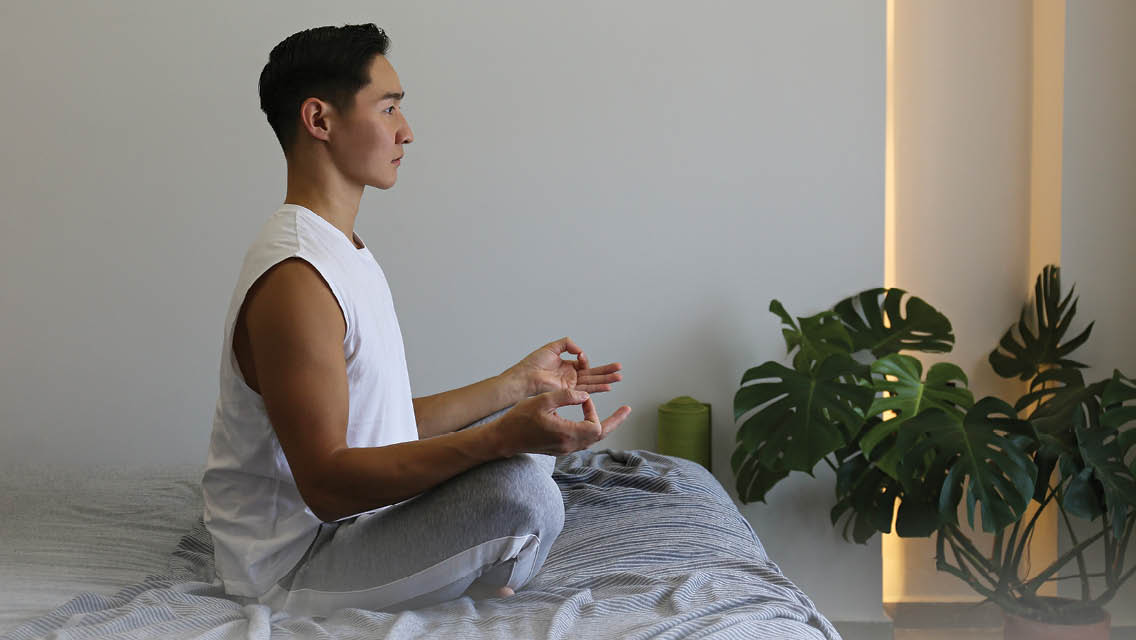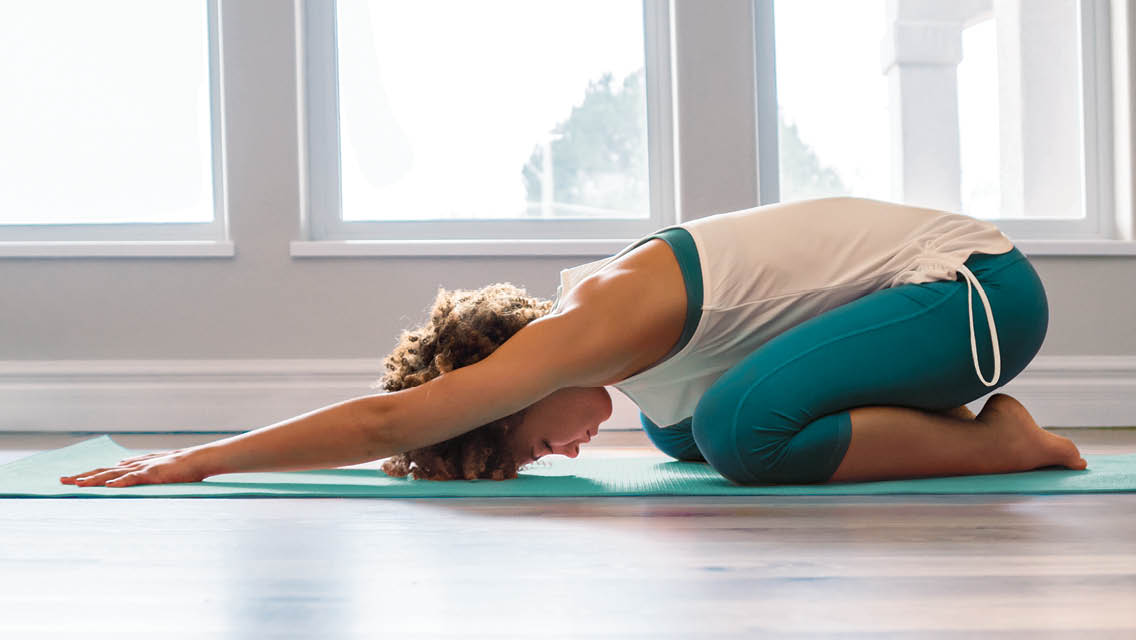The yoga studio was warm and dark, the only sounds the subtle instrumental music in the background and the quiet, steady breaths of my fellow practitioners. It was dusk on a brisk Sunday evening in the fall, and we had just arranged ourselves in seated wide-leg forward folds, our upper bodies and heads resting on bolsters and blankets, our legs splayed out to our sides.
We were maybe two-thirds of the way through the class, and this, the teacher shared, would be the longest hold of our practice. We’d already performed a variety of long-hold postures, which had challenged both my body and my mind. I wasn’t sure how intense this stretch would be — would I struggle to stay in it? Would I crave movement instead of stillness?
Yet as I settled into the pose and reconnected with my breath, my body relaxed into the mat despite the persistent stretch in my hamstrings. My mind went quiet. I don’t know how many breaths I took before I became aware of the seemingly in-between state I was in.
I wasn’t asleep, but I definitely wasn’t awake. I was aware of my surroundings yet restful; I didn’t feel the need to react or do anything other than be. My mind felt open, clear, and at peace. And I remember thinking I wanted to stay there as long as possible — that I shouldn’t do anything that might draw me out of that blissful experience.
I wasn’t asleep, but I definitely wasn’t awake. I was aware of my surroundings yet restful.
I remained there until the instructor’s voice brought us back to complete the practice. I have no clue how long we actually held the pose, but I do know I came out of it feeling wide awake and well rested — and wanting more of whatever that was.
I later learned that this calm and balanced state is often achieved through yoga nidra, or yogic sleep, a practice similar to guided meditation. The intent is to reach a deeply relaxing wakeful consciousness that supports the autonomic nervous system; it’s particularly calming for the sympathetic nervous system (a.k.a. fight-or-flight), and has been found to help reduce stress and anxiety. It typically happens during savasana, or final resting pose (more on that on savasana here).
Now, more than five years later, I still think about that class and the restful bit in the middle because of how good I felt afterward. It’s something I’ve only experienced a handful of times but want more of in my life, especially now.
I’m in a phase that is particularly hectic and intense, in part by choice (i.e. training for a marathon) and in part by circumstance (think family and work responsibilities). Rest — particularly in the forms of postworkout recovery and unscheduled downtime — has been minimal, and I’m noticing the effects. Physically, my body is holding more tension and tightness; mentally and emotionally, I’m less patient and more reactive.
This issue of Experience Life is a reminder for me — and I hope for you too — of rest’s importance to our health and well-being, and that it’s available in many forms. Whether it’s getting a good night’s sleep, taking a few deep breaths, or establishing a calming nighttime routine, there are countless ways we can take good care of ourselves.
For me, that means slowing down and giving myself permission to just be — including returning more consistently to my yoga practice, stretching and breathing deeply, and, hopefully, revisiting that place between that feels so good.




